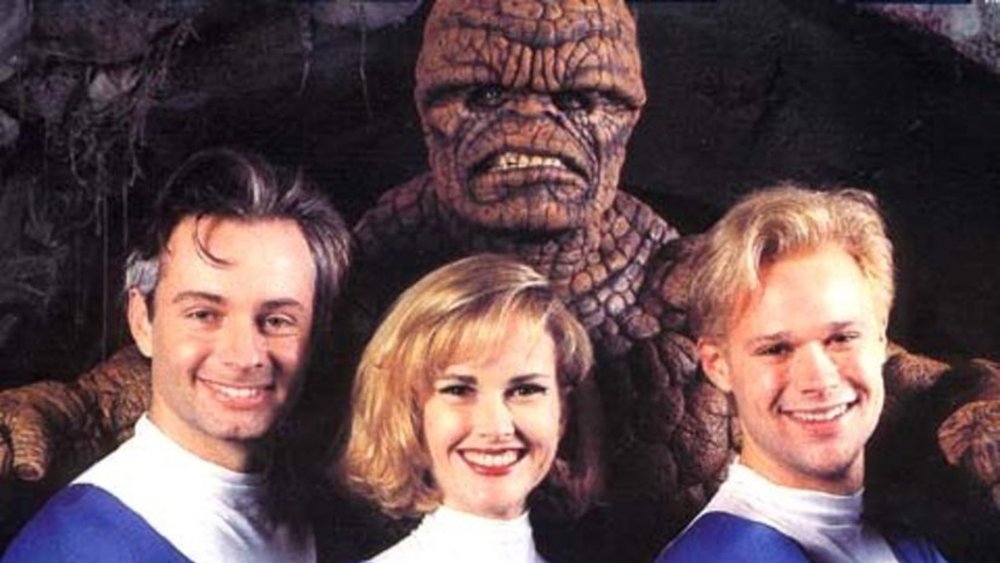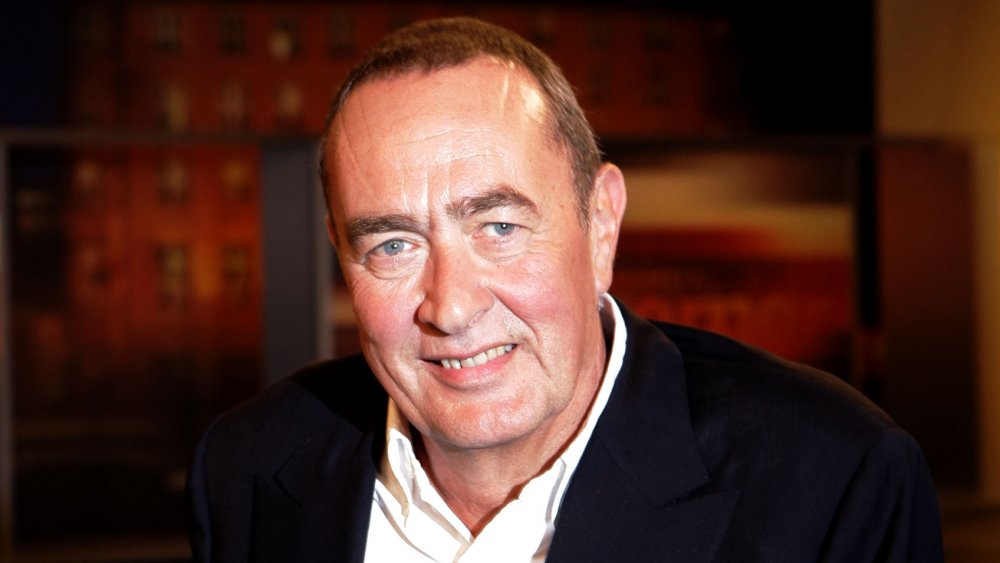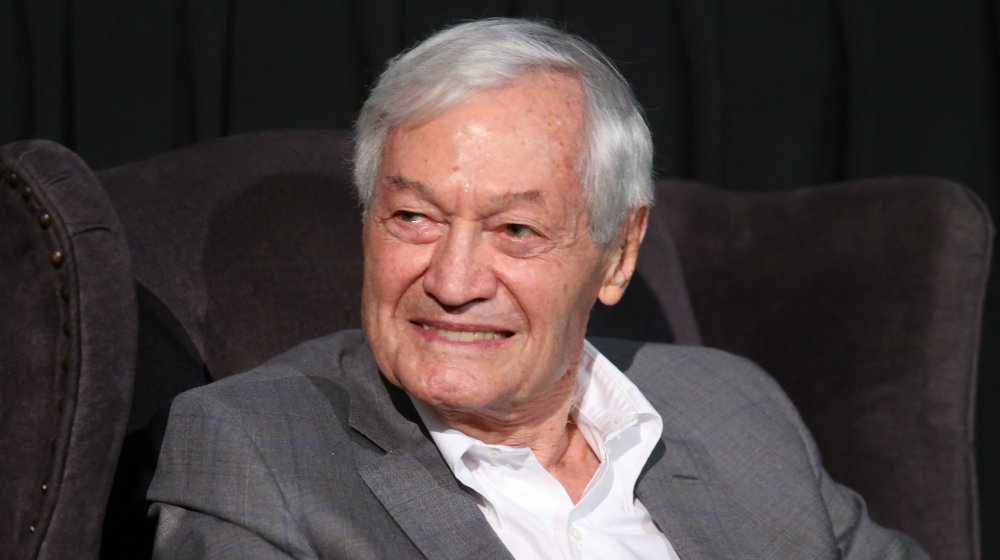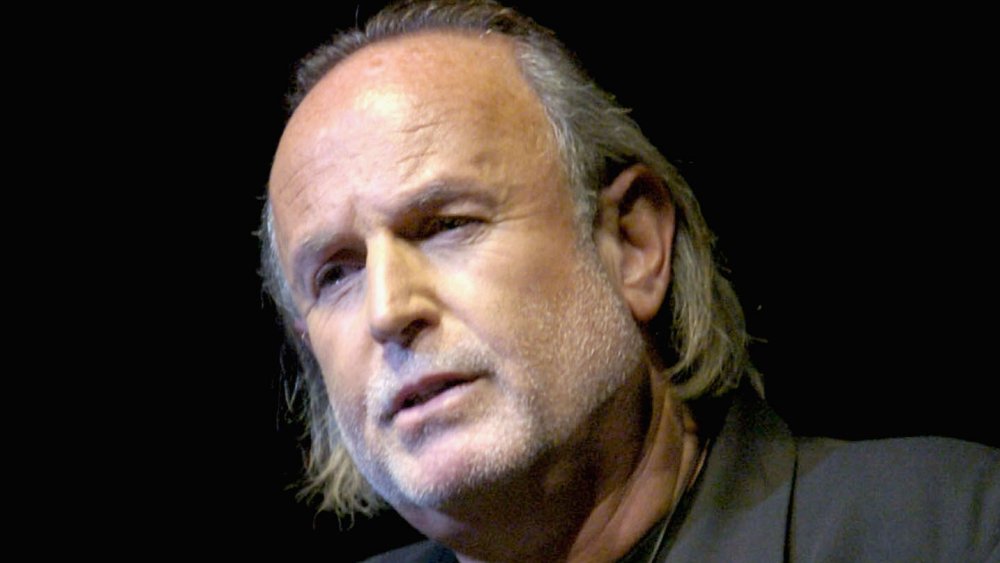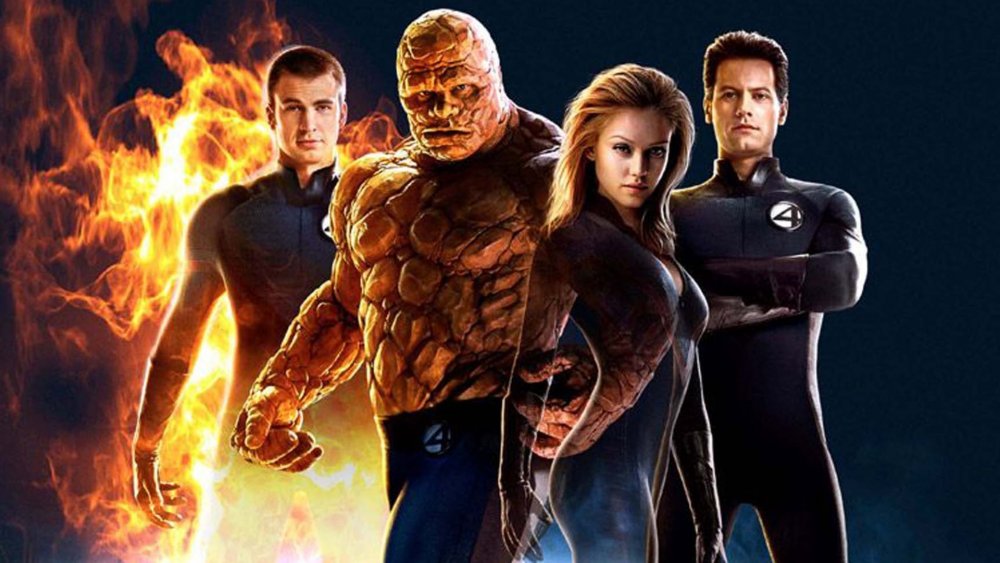The Real Reason 1994's Fantastic Four Was Never Released
In the annals of superhero movie history, there's no story quite so involved and weird as that behind the infamous 1994 starring vehicle for Marvel's first family, The Fantastic Four. A cheap, slapdash production, it's one of those finished films that was never released, although bootleg copies have cropped up online in recent years. If your face is ever in need of strenuous and repeated palming, you can even watch the entire hot mess for free on YouTube, and gaze upon what passed for a Marvel film only 14 years before the MCU was inaugurated with Iron Man.
If you know anything about the picture, you've probably heard that it was thrown together simply so that the studio could retain the rights (which otherwise would have reverted to Marvel), and that it was never even meant to be released. As it turns out, though, this may not necessarily be the case. Many of those involved with its production — including director Oley Sassone, whose eventual career highlight would be directing several episodes of Xena: Warrior Princess — insist that the flick was made with every intention of being released to theaters, and that its fate came down to one man whose name Marvel fans will surely recognize.
We took a deep dive to get to the bottom of what really happened to The Fantastic Four, the first attempt at bringing one of the most stubbornly unadaptable comic properties of all time to the screen, and to find out the real reason the film was never released.
Fantastic Four 1994 started with a producer and a dream
The saga of The Fantastic Four began in 1983, when German film producer Bernd Eichinger — a huge fan of Marvel comics — paid a visit to the legendary Stan Lee at his home. Eichinger was looking to mount a huge international production based on a Marvel property, and he had the Fantastic Four in mind; unfortunately, at that time, the team was broken up, so to speak. Marvel had sold the rights to the Human Torch to Universal in 1977, so Lee was unable to make a deal for the entire family. Eichinger left the meeting with Lee empty-handed, but he kept the idea of a Fantastic Four movie on the back burner (via Los Angeles magazine).
Three years later, Eichinger came back with his pitch after hearing that Marvel had re-acquired the rights to Johnny Storm, and this time, he was successful. He picked up the film rights to not only the FF, but the villain Mole Man, the Silver Surfer, and a raft of other characters for a paltry sum. It was all systems go, but for one thing: Eichinger couldn't find a studio to get on board with his vision.
The producer shopped the project endlessly for the better part of the next decade, and in 1992 — with his contract with Marvel set to expire — he realized he was running out of time. He asked Marvel for an extension, and when they declined, Eichinger got an idea. There may not have been any way he was going to be able to whip up a huge, international production in a matter of months... but he didn't necessarily have to. "They didn't say I had to make a big movie," he reasoned — and with that new approach, he knew just who to go to for help.
An infamous low-budget producer came on board Fantastic Four 1994
With the deadline to begin production on his film only three months away, Eichinger turned to the notorious Roger Corman, a producer who never met a miniscule budget or a time crunch he couldn't work with. Eichinger poured out his story, Corman spent a weekend crunching numbers, and — in the fall of 1992 — The Fantastic Four was finally ready to enter production with a relatively shoestring $1 million budget.
The cast and crew were assembled with dizzying speed. Sassone was tapped to direct due to his efficient work on a slew of music videos (he directed the atmospheric video for Mr. Mister's "Broken Wings," among many others), and British actor Alex Hyde-White, whose most prominent role to date had been a bit part in 1990's Pretty Woman, was cast in the lead as Mr. Fantastic. Rounding out the cast: model and former Miss Nebraska Rebecca Staab as Sue Storm; Jay Underwood, the star of 1986's The Boy Who Could Fly (which was written and directed by Michael Myers actor Nick Castle) as Johnny Storm; and former Dallas Cowboys tackle Michael Bailey Smith as Ben Grimm.
Principal photography commenced on December 28, a mere three days before Eichinger's contract was set to expire, and it was completed just 28 days later. In the summer of 1993, a trailer for the flick ran in front of Corman's Carnosaur, a low-budget Jurassic Park rip-off, and a major screening was planned to take place at Minnesota's Mall of America in 1994. Then, however, a funny thing happened: the cast, crew, and exhibitor were slapped with a cease-and-desist order from the producers.
Avi Arad stopped Fantastic Four 1994 in its tracks
Now, Eichinger doesn't dispute that he stymied the release of The Fantastic Four, but he does take issue with the notion that the film was never meant to be released at all. In Shirrel Rhoades' book Comic Books: How the Industry Works, Eichinger flatly stated, "No, that's not true. It was definitely not our [original] intention to make a B-movie, that's for sure — but when the movie was [finished], we wanted to release it."
Eichinger then dropped the bomb that the ultimate decision to kill the picture came from on high: he said that Marvel executive Avi Arad, who was concerned about the brand being diluted, intervened ahead of its release. "Avi calls me up and says, 'Listen, I think what you did was great. It shows your enthusiasm for the movie and the property. I understand that you have invested so-and-so much and Roger has invested so-and-so much. Let's do a deal,'" Eichinger recalled. "Because he really didn't like the idea that a small movie was coming out and maybe ruining the franchise. So he says to me that he wants to give me back the money we spent on it, and that we should not release it."
This would sound an awful lot like passing the buck, had Arad not confirmed it. In the same book, the executive admitted that he "purchased the film for a few million dollars, and ordered all prints destroyed." Obviously, at least one of those prints survived — and as an amazing post-script to the story, Eichinger would get a second chance with Marvel's First Family a decade later.
Eichinger ended up as a producer on Fantastic Four 2005
A few years after the non-release of The Fantastic Four, comic book movies would become big business, thanks to 2000's X-Men and 2002's Spider-Man. After Eichinger's buyout by Arad, Marvel had sold the film rights to the FF to 20th Century Fox, the studio behind X-Men — and development on a big budget adaptation had begun almost immediately, with Home Alone director Chris Columbus in talks to write and direct the flick as early as 1995.
A number of filmmakers came and went from the project over the next decade (including future Ant-Man director Peyton Reed), with the 2004 hiring of Tim Story finally sticking. Even then, the film hit a major stumbling block; at the last minute, major revisions to the script were required, due to similarities between it and the 2004 Pixar classic The Incredibles.
But the movie, starring Ioan Gruffudd, Jessica Alba, Michael Chiklis, and future Captain America Chris Evans, finally hit theaters in 2005, for better and worse. The flick and its 2007 sequel were largely seen as disappointments by fans, though not nearly so much as the unmitigated disaster that was the 2015 reboot. There were, however, a few interesting names to be found in the flick's credits. Among its dozen or so producers were Arad, Columbus, Stan Lee, a relatively green young executive named Kevin Feige... and Eichinger, who finally got to be involved with the big-budget Fantastic Four adaptation he'd always envisioned.
